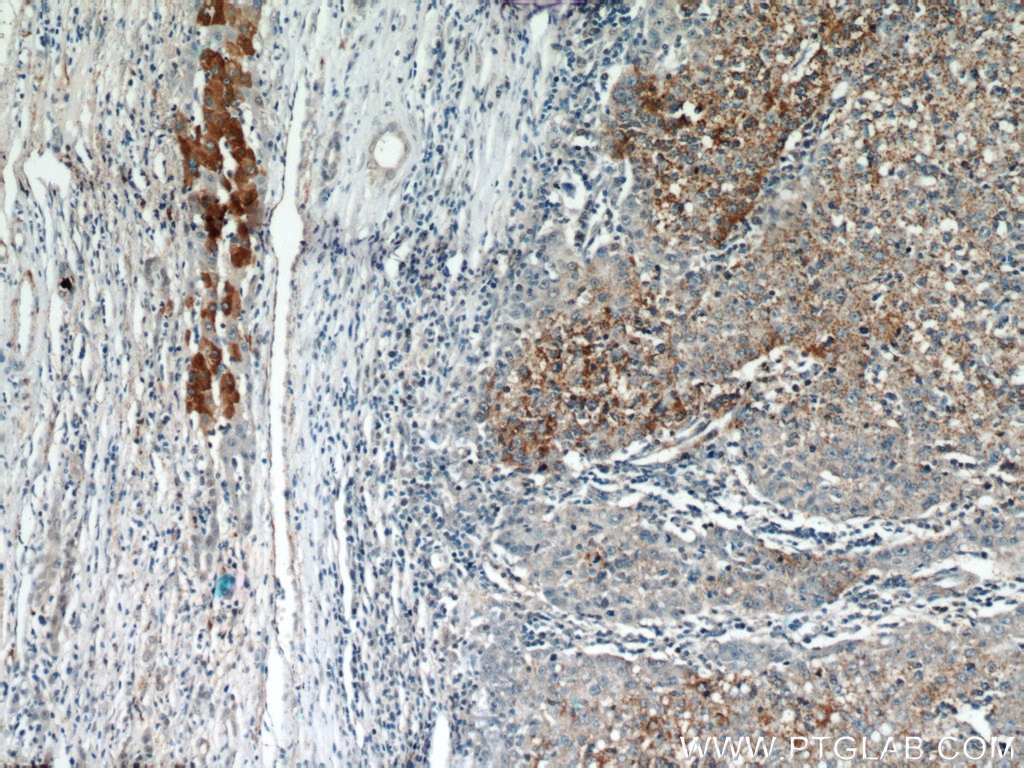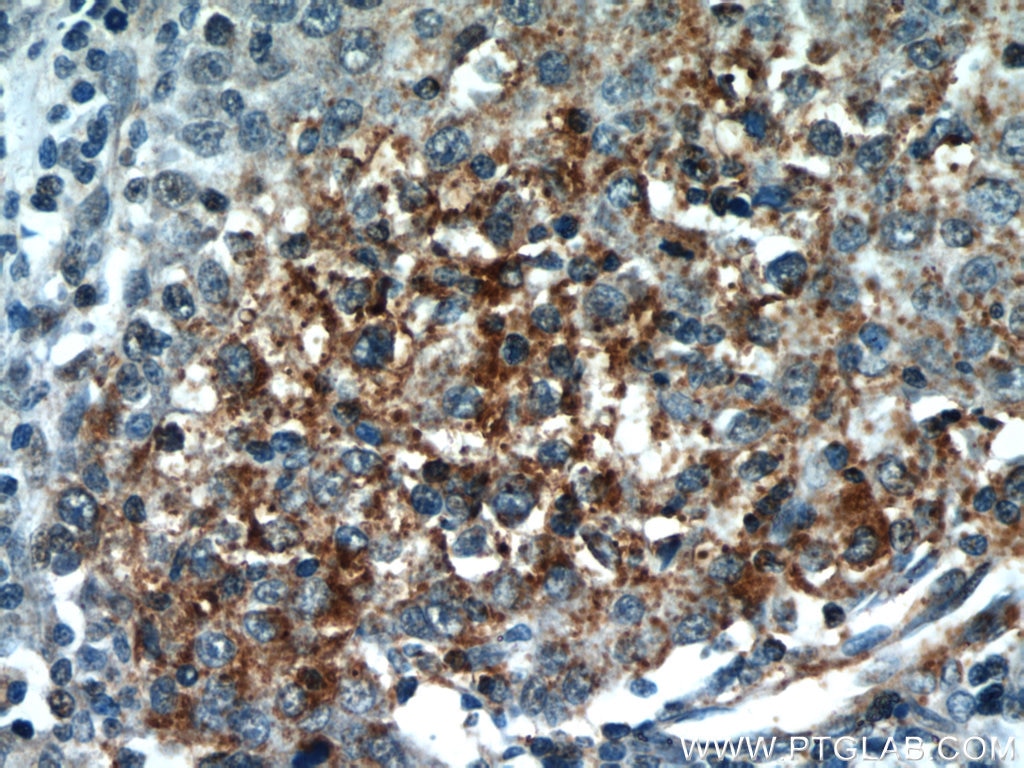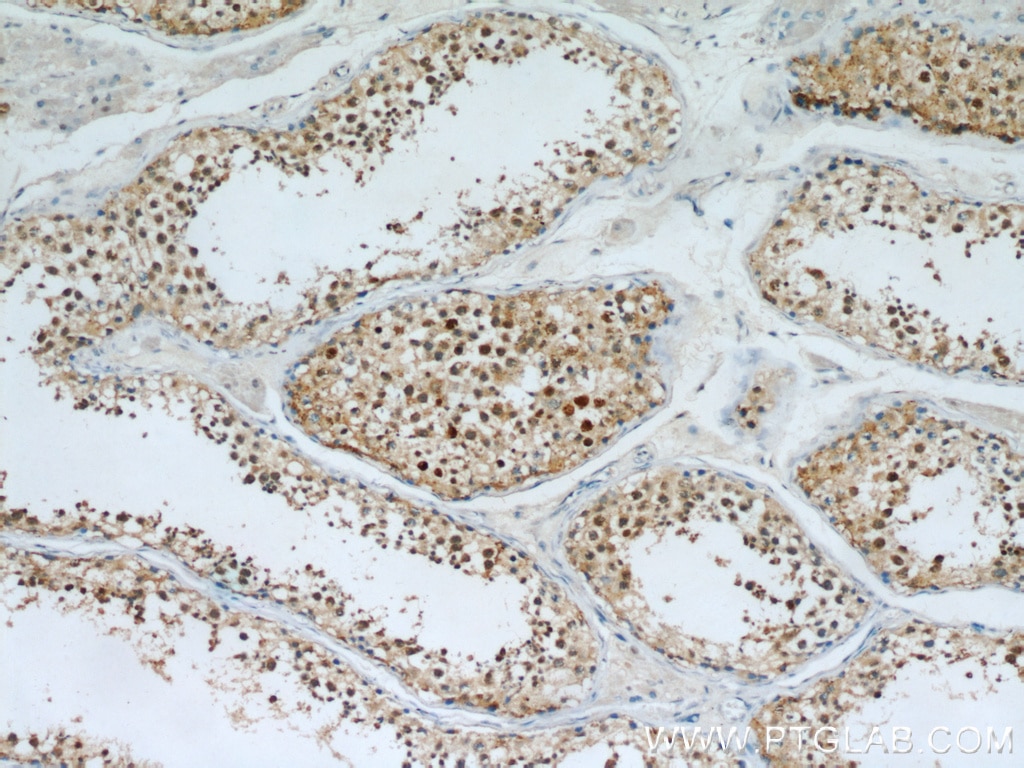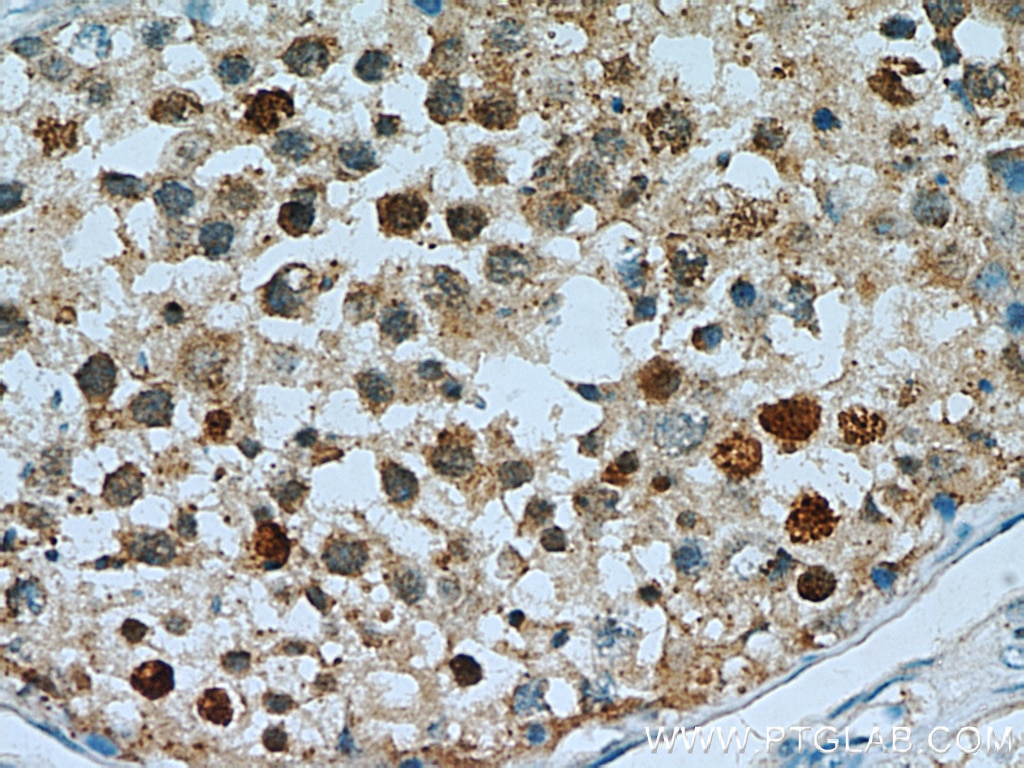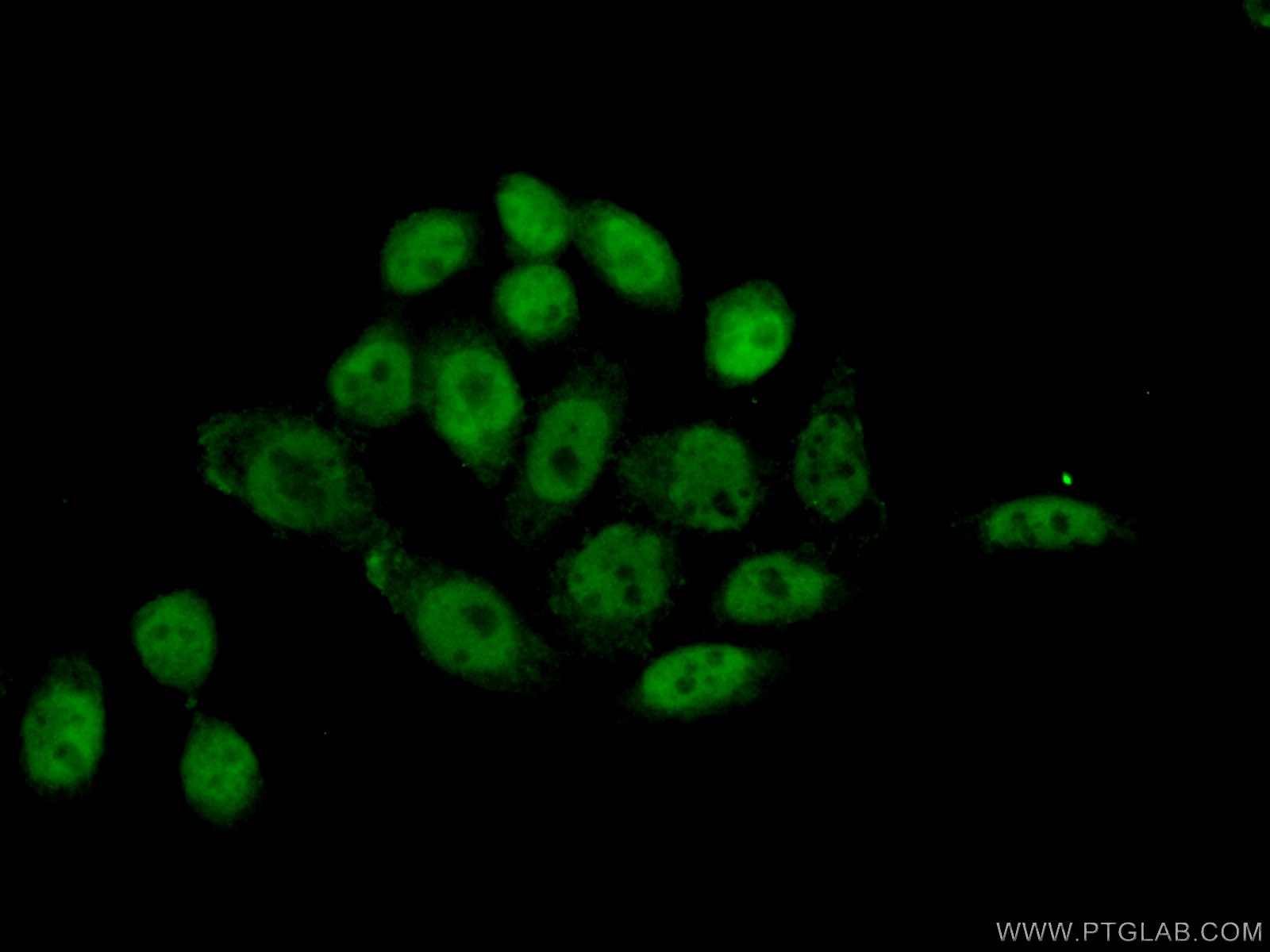PI3 Kinase p110 Beta Polyklonaler Antikörper
PI3 Kinase p110 Beta Polyklonal Antikörper für IF, IHC, ELISA
Wirt / Isotyp
Kaninchen / IgG
Getestete Reaktivität
human und mehr (1)
Anwendung
WB, IHC, IF, ELISA
Konjugation
Unkonjugiert
Kat-Nr. : 21739-1-AP
Synonyme
Galerie der Validierungsdaten
Geprüfte Anwendungen
| Erfolgreiche Detektion in IHC | humanes Leberkarzinomgewebe, humanes Hodengewebe Hinweis: Antigendemaskierung mit TE-Puffer pH 9,0 empfohlen. (*) Wahlweise kann die Antigendemaskierung auch mit Citratpuffer pH 6,0 erfolgen. |
| Erfolgreiche Detektion in IF | HeLa-Zellen |
Empfohlene Verdünnung
| Anwendung | Verdünnung |
|---|---|
| Immunhistochemie (IHC) | IHC : 1:20-1:200 |
| Immunfluoreszenz (IF) | IF : 1:50-1:500 |
| It is recommended that this reagent should be titrated in each testing system to obtain optimal results. | |
| Sample-dependent, check data in validation data gallery | |
Veröffentlichte Anwendungen
| WB | See 9 publications below |
| IHC | See 2 publications below |
| IF | See 1 publications below |
Produktinformation
21739-1-AP bindet in WB, IHC, IF, ELISA PI3 Kinase p110 Beta und zeigt Reaktivität mit human
| Getestete Reaktivität | human |
| In Publikationen genannte Reaktivität | human, Maus |
| Wirt / Isotyp | Kaninchen / IgG |
| Klonalität | Polyklonal |
| Typ | Antikörper |
| Immunogen | PI3 Kinase p110 Beta fusion protein Ag16456 |
| Vollständiger Name | phosphoinositide-3-kinase, catalytic, beta polypeptide |
| Berechnetes Molekulargewicht | 1070 aa, 123 kDa |
| Beobachtetes Molekulargewicht | 110 kDa |
| GenBank-Zugangsnummer | BC114432 |
| Gene symbol | PIK3CB |
| Gene ID (NCBI) | 5291 |
| Konjugation | Unkonjugiert |
| Form | Liquid |
| Reinigungsmethode | Antigen-Affinitätsreinigung |
| Lagerungspuffer | PBS mit 0.02% Natriumazid und 50% Glycerin pH 7.3. |
| Lagerungsbedingungen | Bei -20°C lagern. Nach dem Versand ein Jahr lang stabil Aliquotieren ist bei -20oC Lagerung nicht notwendig. 20ul Größen enthalten 0,1% BSA. |
Hintergrundinformationen
PIK3CB(phosphatidylinositol 4,5-bisphosphate 3-kinase catalytic subunit beta isoform) is also named as PIK3C1, PI3K-beta, p110beta. The gene encodes a 1070 amino acid protein which belongs to the PI3/PI4-kinase family. Phosphoinositide 3-kinases (PI3Ks) have been implicated as participants in signaling pathways regulating cell growth by virtue of their activation in response to various mitogenic stimuli. The class I PI3 kinases are heterodimers composed of 110 kDa catalytic subunits that associate with regulatory adaptor proteins. Four class I catalytic subunits have been identified, PIK3CA (p110α), PIK3CB (p110β), PIK3CD (p110δ) and PIK3CG (p110γ)(PMID:19177002).
Protokolle
| Produktspezifische Protokolle | |
|---|---|
| IHC protocol for PI3 Kinase p110 Beta antibody 21739-1-AP | Protokoll herunterladen |
| IF protocol for PI3 Kinase p110 Beta antibody 21739-1-AP | Protokoll herunterladen |
| Standard-Protokolle | |
|---|---|
| Klicken Sie hier, um unsere Standardprotokolle anzuzeigen |
Publikationen
| Species | Application | Title |
|---|---|---|
Cell Mol Gastroenterol Hepatol Mannan-binding lectin via interaction with cell surface calreticulin promotes senescence of activated hepatic stellate cells to limit liver fibrosis progression. | ||
Biochem Pharmacol TANGO1 interacts with NRTN to promote hepatocellular carcinoma progression by regulating the PI3K/AKT/mTOR signaling pathway | ||
J Ethnopharmacol Root extract of Hemsleya amabilis Diels suppresses renal cell carcinoma cell growth through inducing apoptosis and G2/M phase arrest via PI3K/AKT signaling pathway | ||
Cells Determination of WWOX Function in Modulating Cellular Pathways Activated by AP-2α and AP-2γ Transcription Factors in Bladder Cancer. | ||
J Zhejiang Univ Sci B Silencing of DsbA-L gene impairs the PPARγ agonist function of improving insulin resistance in a high-glucose cell model. | ||
Mol Med Rep EGFR‑associated pathways involved in traditional Chinese medicine (TCM)‑1‑induced cell growth inhibition, autophagy and apoptosis in prostate cancer. |
